The Flash returns to The CW for a third season tomorrow with a premiere episode entitled “Flashpoint.” Of course, as DC fans know, that title is a reference to the 2011 miniseries of the same name written by Geoff Johns and drawn by Andy Kubert.
If you’re a longtime reader or a devout DC Comics fan, you likely know and understand the importance of Johns and Kubert’s FLASHPOINT. But many fans of the Flash TV show may not be familiar with the character’s comic book legacy, or may have just started reading DC comics with the start of Rebirth. If that’s you, you’ve likely heard a lot about Flashpoint and may be wondering what the big deal is. After all, while Flashpoint has become a recent classic, its impact isn’t quite on the level of, say, CRISIS ON INFINITE EARTHS. But it does come close, and its arrival on The CW show almost certainly means that everything on the show is about to change.
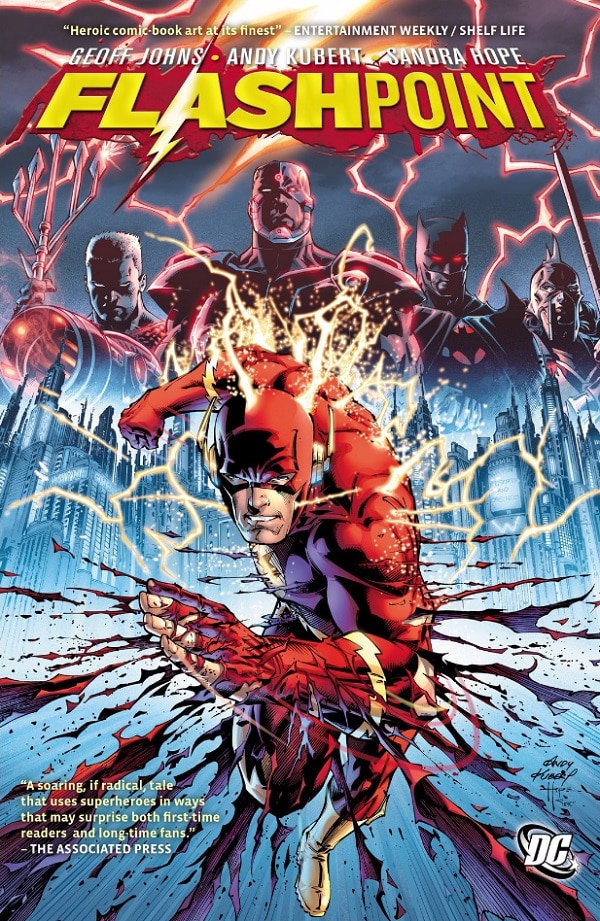
What is Flashpoint About?
In the Flashpoint comic, Barry Allen wakes up powerless and living in a different, much darker world than the one he knows. Heroes are villains, villains are heroes, and worst of all, Themyscira and Atlantis are waging a brutal war with each other that has caused millions of deaths and is likely to bring about the end of the world. The one bright spot for Barry is that his mother is still alive, but even his joy at seeing her doesn’t stop him from wanting to return to the world he knows. Without spoiling too many of the details, Barry eventually learns that he created this world when he went back in time and prevented his mother’s murder, albeit with a little prodding from the Reverse-Flash.
Whether you intend to watch The Flash’s premiere or not, you should read the Flashpoint comic. It’s become a seminal part of Barry Allen’s history and explains why a hero who can travel through time doesn’t use that ability to solve present day problems. But more than that, it’s a fun, surprising story packed that holds a surprising amount of importance to the world of DC Comics.
Just how important is it? Well…
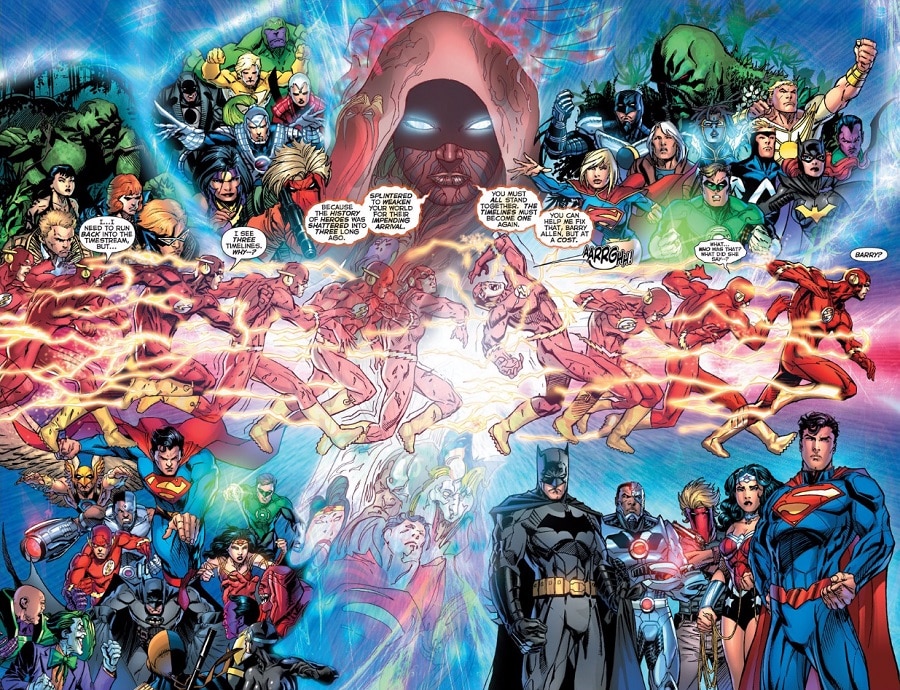
It Literally Changed the DC Universe
While Flashpoint works as a standalone story, it’s probably best known as the miniseries that jump started what became known as The New 52. In September, 2011, DC Comics restarted every comic book in its main line at issue #1, each with all new continuity. And while Rebirth now finds the heroes of the DC Universe questioning that continuity and has brought in characters from prior to it, The New 52 is still the continuity of the DC Universe.
In other words, every in-continuity comic DC is currently publishing and has published over the past five years essentially starts at Flashpoint. It’s the book that started it all. But that’s only one of the things this relatively brief miniseries did.
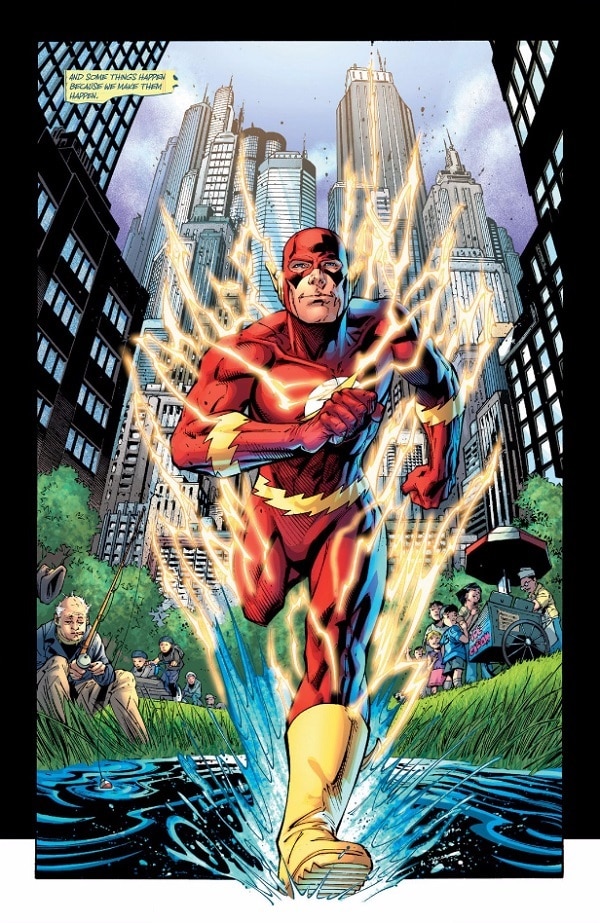
It Established the Flash as One of the DC Universe’s Most Important Heroes
That’s right, the Flash is arguably the DC Universe’s most important hero. Notice I didn’t say that he’s DC Entertainment’s most important hero. We’d have a hard time making the case that he’s more popular or significant than Superman, Batman, Wonder Woman or any of his other fellow Justice Leaguers—but to the DC Universe and the world these characters inhabit, he’s extremely important.
That’s because Flashpoint cemented the Flash’s role as someone who can affect change on the Multiverse. (For a bit more on the Multiverse, be sure to check out this earlier DC Comics 101 article.) The Multiverse made its very first appearance back in the Silver Age, in THE FLASH #123’s classic story “The Flash of Two Worlds,” where Barry Allen met his Golden Age predecessor Jay Garrick for the first time. In Crisis on Infinite Earths, Barry Allen famously died saving the Multiverse and remained dead in the pages of DC Comics for 23 years. He finally returned in 2008’s FINAL CRISIS, in which he again played a key role in saving the Multiverse. Most recently, the Flash has once again found himself in the center of a Multiverse-related mystery in DC UNIVERSE: REBIRTH, though this time it’s the recently returned Wally West leading the charge.
This ability to travel through and impact the Multiverse is largely unique to the Flash. (Okay, before any of you start protesting below in the comments, I did say “largely.” There are other characters who can journey through and alter the Multiverse, but none of them have the recognition or popularity of the Flash.) Even more key, this ability is proving to be of massive importance to the character outside of comics. The Flash TV show acknowledged it when it introduced Earth-2 and made the alternate earth a huge part of Season 2. We’ll likely have to wait a few years to know what role, if any, the Multiverse will play in the DCEU. But Batman v Superman: Dawn of Justice seems to at least tease the possibility that we’ll be seeing it…and that Barry Allen will once again prove to be at the center of the whole thing.
So yes, while Flashpoint didn’t establish this connection the Flash has with the Multiverse, it reinforced it in a big way by establishing that he can actually create alternate earths. And speaking of alternate earths.
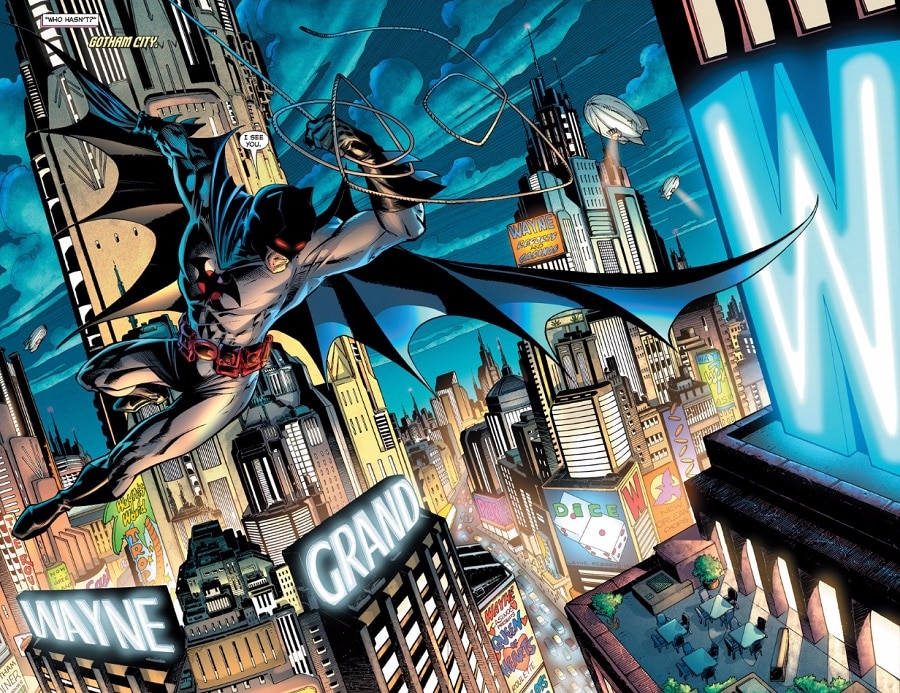
It Revisited “Elseworlds” Style Storytelling
“Elseworlds” was a line of comics that introduced alternate versions of well-known characters. Technically, THE DARK KNIGHT RETURNS is an Elseworlds book. It was a popular line of comics for many years, but it no longer exists and up until Flashpoint, DC had largely gotten away from that style of storytelling.
Flashpoint did some really fun alternate world building, and Geoff Johns wasn’t the only writer who got to participate. Along with the core miniseries, twenty different spinoffs were published at the same time, and some of these were pretty great as well. Dan Abnett, Andy Lanning and Tony Bedard filled in some pretty crucial backstory on just what had happened between Aquaman and Wonder Woman to bring their powerful civilizations to war. Scott Snyder teamed up with Lowell Francis to tell the Flashpoint Superman’s frightening story, while Jeff Lemire wrote a great under-the-radar tale featuring Frankenstein.
However, the most popular of the spinoffs features the Flashpoint world’s Batman, a character who also features heavily in the main story. Written and drawn by the 100 BULLETS team of Brian Azzarello and Eduardo Risso, BATMAN: KNIGHT OF VENGEANCE is an Eisner-nominated story that stands alone as a dramatic, tense look at the destructive power of grief. It’s highly recommended, and the less you know about it the better. There are some pretty great twists in its three issues, so read it before someone spoils it for you!
It’s likely the alternate world aspect of Flashpoint that has fans of the story the most excited about The Flash’s decision to adapt it. However, producers of the show has said that their take is considerably different than that in the book, so you probably shouldn’t expect to see any skinny Supermen or clashing Amazons. Could we see the “heroic” Citizen Cold? We’ll know tomorrow.
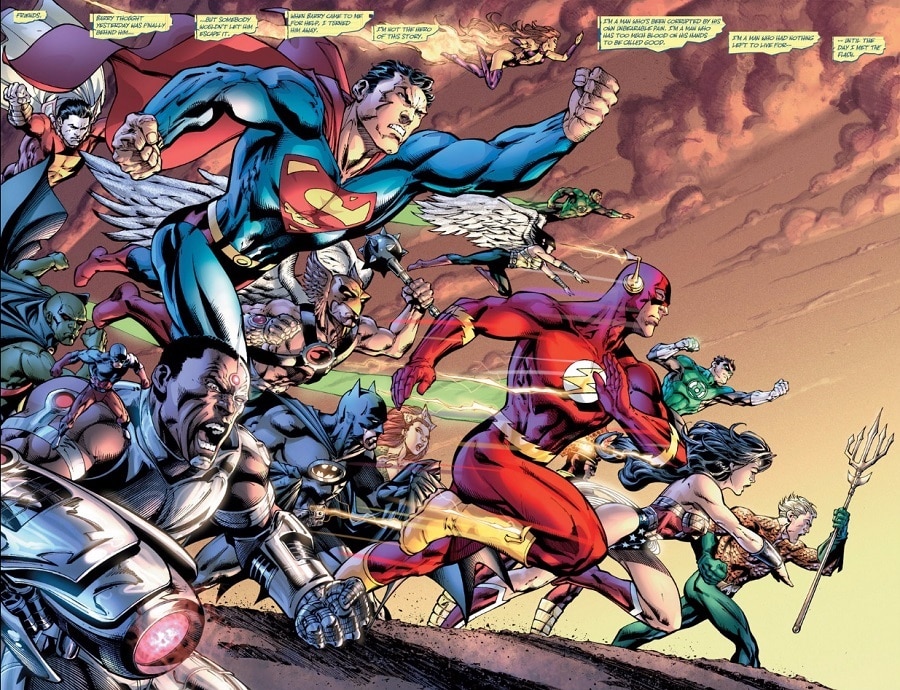
It Launched a Bold New Era for DC
Flashpoint and the subsequent New 52 were unprecedented for a major comic book publisher. While relaunches and reboots aren’t exactly rare in comics, never before had a publisher restarted its entire line of ongoing comic books—some of which had started back in the 1930s and 1940s—from ground zero with new issue #1s. It got the industry’s attention and revitalized DC’s sales for years to come.
While some longtime readers felt alienated by the move, losing years and years of story continuity they had been invested in, The New 52 did bring in new readers and launched creatively daring new runs for characters like Batman, Wonder Woman, Aquaman (written by Johns), Animal Man and yes, the Flash. Wonder Woman’s origin was changed, and her pantheon of supporting characters was reimagined to much acclaim. Batman established Scott Snyder and Greg Capullo as one of the quintessential Dark Knight creative teams, yielding stories like “The Court of Owls” and “Death of the Family.” Animal Man brought a family dynamic to a tale of horror, and became the most relevant it’s been since Grant Morrison left the book. As for Aquaman, well, Johns made sure no one would see him as a joke ever again, producing some of the most vital Aquaman stories in the process.
Taking an even broader view of it, Flashpoint and The New 52 would eventually go on to become the seed for a line-wide mystery that was revealed last spring in DC Universe: Rebirth—a book that also launched a new slate of issue #1s along with revitalized sales and storytelling. Even now, five years later, Flashpoint is continuing to surprise us.
As we said earlier, if you haven’t read Flashpoint, you should. The whole storyline is available in one graphic novel (though it doesn’t include the spinoffs), and the entire event is available digitally. The story was also adapted pretty faithfully into an animated movie called Justice League: The Flashpoint Paradox.
Even better, the entire event is on sale from 10/4 through 10/10 as part of a weeklong Flashpoint Digital Comics Sale timed to the TV show’s return. Click here to check it out!




















